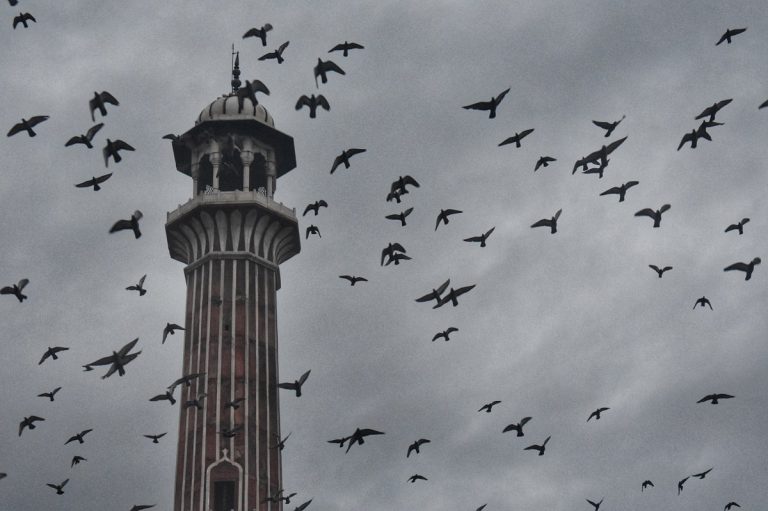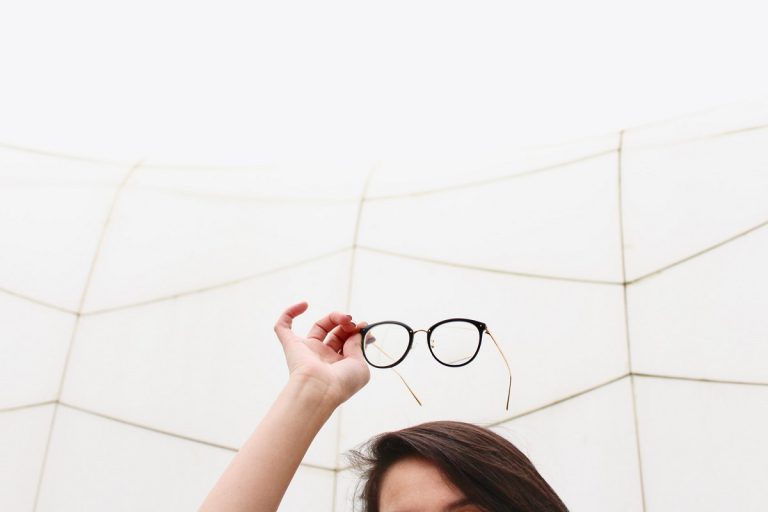Veerabrahmendra Swamy: A saint who predicted the doomsday
In November of 1984, weeks after the death of Indira Gandhi, her primary adversary, NT Ramarao, now the Chief Minister of Andhra Pradesh staged a release of one of his most prestigious projects, ‘Srimadvirat Veerabrahmendra Swamy Charitra.’ In it, he played the seventeenth-century mystic and ‘soothsayer,’ Pothuluri Veerabrahmendra Swamy. Today the film is touted by its twenty-first-century enthusiasts as one of the most-watched films of the time. People of the generation will tell you that not a single person from ‘Andhradesam’ missed it. Such was the compelling force of the film, its maker and actor, NTR, and finally, the subject of the film, Brahmendra himself. The saint that the movie paints is one with miraculous powers and a god-sent who had an eye that pierced into the future. Brahmam garu in this 1984 production sings couplets and predicts a world that has headed towards doom. The clairvoyance of Brahmam in this film was a facet to NTR’s self-posturing as a messiah.
Brahmam garu was impactful enough for a few academics to take note of him. KM Panikkar in an address to the history congress mentioned him among the proto-reformers. In his books, Pothuluri Veerabrahmendra was the founder of a sect of Sadhus who helped dissolve caste differences and foreshadow dissent against Brahminical rigidity. Although the saint enjoys little space in Panikkar’s speech, it is no mystery that the Brahmam of the scholar is dramatically different from the version that the cinegoer enjoyed. Between these two narratives, the saint is stranded. Was he a Nostradamus of medieval Southern India? Or was he a reformer in the line of Kabir and Tukaram? I believe – neither. He was a rare example of an Indian anthropologist. He assessed society, made a few extraordinary inferences, and some that were way off. He was someone who taught us what an educated guess would mean. He was, for the sobriquet zealots, an Ibn Khaldun after Ibn Khaldun and a Tocqueville before Tocqueville.
The contemporary sources from Veerabrahmam’s time are particularly scant. The most important source is his work, ‘Kalajnanam’ or ‘the wisdom of time’ for which he is known. There is almost no inscriptional evidence for the figure, either. However, in his travels and survey, General Colin Mackenzie managed to collect records and oral histories from Rayalaseema (Southern Andhra Pradesh) in the early decades of the nineteenth century. Veerabrahmam also left behind as a relic from his time, a matham or monastery which has had a more-or-less unbroken chain of abbots hailing from different Telugu-speaking regions. So we also have at our disposal the legends that are in circulation courtesy, this matham.
Despite great disputes earlier, the few historians who have worked on his thought have now pretty much concluded that Veerabrahmendra Swamy was born in 1608 (through his earmarking of political events in relation to his birth, in the kalajnanam). His birthplace is shrouded in mystery – for legend has it that he was born in a village named ‘Brahmandapuram,’ but its whereabouts are unknown. We are also aware that Brahmam was born to a Vishwakarma-Brahmin couple (the artisanal caste of the region is known by this name). As a child, he is said to have been raised in a village in Chikkaballapura district of Karnataka before he left home to tour the world. This segment of his life conforms to a leitmotif associated with sages (and subsequently to revolutionaries). The world tour accounts for a missing record in one’s life. It is the magic moment that explains the turning of a human into a superhuman figure. Much of his preaching was done during his grihasthya phase. In this, he is often compared to Ramanujacharya who lived the life of a married man before turning into a sannyasin. Veerabrahmam married a woman in Kandimallayapalle and settled there for some time. The location of the writing of Kalajnanam and ‘social reform’ is Banaganapalle in present-day Kurnool District of Andhra Pradesh.
Several miracles have been attributed to the Brahmam of Banaganapalle: the generation of fire from the air, and in the court of the Sultan of Golconda, in water; the gulping of metal; reviving people after fatalities like a snake bite, fire accident, drowning in a river. Brahmam is reminisced now for his predictions on doomsday. The temple town of Srisailam would be engulfed in flames, he said; Goddess Lakshmi would shed tears. Tigers would fill the streets of every village and town. The most significant prediction of his associated with Armageddon is his return as Veerabhogavasanta Rayalu. Veerabrahmendra Swamy claimed that akin to Kalki in Puranas, Vasantaraya would arrive at the climax of Kaliyuga and oversee the eventual destruction of the world. NT Ramarao’s various associations with Brahmam include this: he claimed that he was Veerabhogavasanta Rayalu.
Besides these predictions, Brahmam’s observations on social institutions are of importance to us. He mentions several significant political events from the past and developments of his own time. He also places himself consciously in the philosophical traditions of India. He asserts in his ‘Kalajnanam’ that Brahma ought not to be searched elsewhere, but in fellow men and in this, he is said to walk in the path of the Advatins (non-dualist). In fact, he affirms that he was Shankaracharya incarnate. Brahmam has done much in Kalajnanam to place himself in context, but these efforts have fallen to deaf ears. To construct a system of making meaning from his predictions, one should not lose view of Veerabrahmendra’s method of chronology. Or rather, his method of anachronism. Brahmam – perhaps consciously – uses tenses liberally. He uses the present tense for the future, the future for the past, and even the past for the future. This has led to a great deal of confusion among devotees. For instance, people have credited him for predicting the coming of the East India Company. In contrast, this may as well have been an event that he took note of from his own time for, by 1611, a trading post had been established at Machilipatnam on the East Coast of Andhra.
Our standing on a firm vantage point to glimpse at Brahmam’s scheme of chronology allows his scattered verses to fall in place. If we were to look at the realm of politics: he had these predictions to make: ‘The Tamil (arava) lordships worsen’ and ‘The Mughal horse touches Rameshwaram’. Both these predictions have little to do with clairvoyance and everything to do with political analysis. Despite never firmly being under the direct rule of the Mughal Emperor, the Tamil country was recognized as being a Subah of the Mughal Empire in the early decades of the eighteenth century – through the Nawabate of Arcot and later, the dynamic general Yusuf Khan. These developments had occurred from the environment of a general disintegration of the Vijayanagara Empire. The disintegration had allowed Nayakaships to be established across Southern India – which then were to be overrun by the Marathas. The breakup of this empire to he pays much attention too. For example, he says, ‘Karnata kings have fallen into the thick of jungles”. He makes references to chief fortifications of Vijayanagara, which fell to the foes of these kings during his own time. “Tigers prowl Gooty and Penukonda.” (Gooty and Penukonda are towns in Anantapur District of present-day Andhra Pradesh). We see that he was cognizant of the phenomenon of entropy or rather political flux – from his observations from the past. He references several kings, mostly from Vijayanagar or their vassals across Andhra, but even empires that succeeded one another. Each succeeded the other from the vacuum created from decline and sometimes dramatically, doom. The fall of Vijayanagara and their successor states was just another instance, and the Mughals, too, were just one more set of usurpers in the South Indian scene.
Veerabrahmam is particularly interesting and therefore has to be read for, his perspective on social flux, which people have come to see as images of catastrophe. The paradigm he represents for the future is the eventual weakening of the traditional order and the replacement of notions of transgression by instrumentalism, principle by opportunism, religiosity by entitlement, birth, and clique-based rights and responsibilities by commercialism and self-interest. Let us first look at the issue of gender relations and the position of women. “Widowed women turn into wedded ladies.” The interpretation of this is straightforward. It would not have been too hard to foresee because, in the Dharmashastra tradition, the question of widow remarriage was one of the most fraught arenas. It is, in fact, from the reformist potential in this that allowed nineteenth-century radicals to pursue the cause of the widow.
On the affairs of caste, he adds: “Hey, you- comes to be replaced by yes, sir.” “From the mixing of caste, fights become many.” Here we see two phenomena. One, the coming of respect and fall of the notion of birth-based high and low, and two, the building up of antagonism from a system that was supposedly dominated by internal harmony. Having experienced the rapid transformations in the last hundred or so years, we know that these two are not separated. From the cultivation of some kind of stipulated egalitarianism has developed both of these: the replacement of inherited hierarchies with new configurations and thereby the striking of tensions between power groups.
Tensions in Kalajnanam are manifold. ‘Father and son war between one another.” “Conflicts rage between mothers and children.” “Relations and kinship die down,” he says. In other words, people are not tied by obligation but instead by necessity. In all of these instances, the obligation is founded on sacred texts and infrastructure. In this, Veerabrahmam sees a decisive breakdown. “Horoscopes are thrown aside”, he says. “Saivas and Vaishnavas end up with little differences.” “Insults ensue against God, Guru, and Brahmin.” However, this is not to say that religion and sanctity go extinct. Religion remains but remains as one facet of culture and community; it stays but stays incidental. It, too, can be played around with. “The world shall be filled with fake gurus, child.” Also, the notions of insider and outsider are dissolved. “Mlecchas will sing and dance with radiance before Tirupati Venkateswara,” he says.
From Veerabrahmendra Swamy’s predictions, a faint silhouette of the individual, a self-interested individual, can be constructed. We know that he laments such a future, for – self-interest and attachment have a neat overlap with the vices in the traditional Hindu morality, the arishadvargas. Hence, says Brahmam: “Arrogance and disdain will rise and give birth to desire, greed, rage, and attachment.” “One’s wealth becomes another’s.” Elsewhere he indicates the fluidity of property and relations. “One’s wealth another takes, and one’s wife too.” These verses must be read together: greed and disenchantment with family, the disdain for scripture, and resentment against caste.
What convinced Veerabrahmendra Swamy of the collapse of the older order? Was the progress of the Company’s mercantile capitalism prominent enough for him to take note? We cannot surely say. But I believe something else may have. The development of individualism in South India coincided with the entry of Europe in the Indian scene. However, the progress of the individual in some ways had a vast organic proportion to it. It was a homegrown commercial individual. One only has to look at the path-breaking 1992 work of Sanjay Subrahmanyam, Velcheru Narayana Rao, and David Shulman to realize that. They depict the Nayaka states of the South as being dominated by kings who perceived themselves as first and foremost individuals who deserved their place as rulers in their respective states. They deserved these places because one, they had conquered them through might, and two because they had earned through these conquests and therefore plundered, lavish amounts of wealth. They did not even bother to Kshatriya-ise themselves. They were proudly Balijas. They turned even Gods and Brahmins into customers. In their Yakshaganas, Vishnu, and his servant, the Brahmin were both beneficiaries, while the benefactor was the king. Is this not a world very much akin to the ‘future’ envisaged by Brahmam? Even if these phenomena in the Vijayanagara and Nayaka courts were too mild to catch the eye, it would not have been impossible for a Brahmam to see his present spiral down to our present.
Veerabrahmendra Swamy leaves several crucial lessons to us: the conversion of the genius into a mystic and the unfortunate obscuring of a rational spirit. Two, from Swamy’s philosophies: the entropic or rather the dynamic nature of the world and society. What was, yesterday, may not be today, and what is today may not be tomorrow. There is little foreign or native to the substance. As long as there is space, there will be substance.
*Kannekanti Rajamallachari’s Telugu biography of Pothuluri Veerabrahmendra Swamy was an important resource in this.
Featured Image Credits: Telugu Bhaarath








